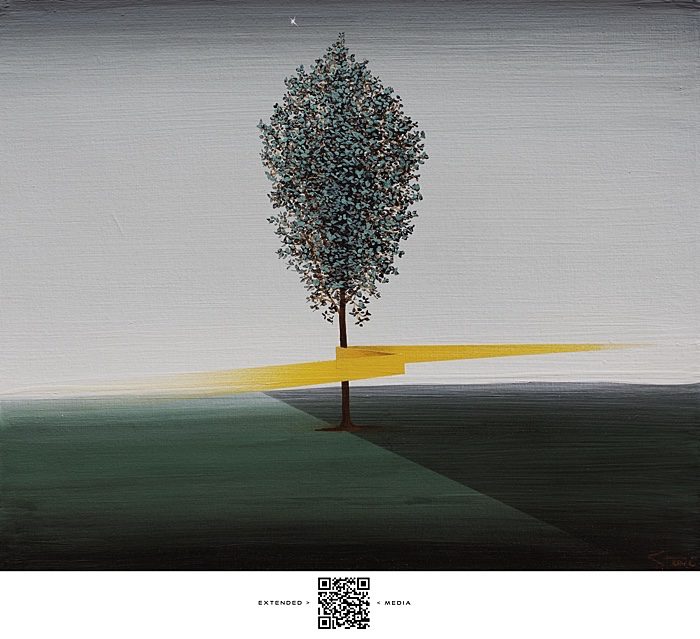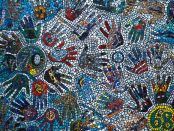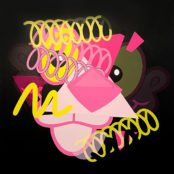[dropcap style=”font-size:100px; color:#992211;”]M[/dropcap]assurrealism the post-modern trend to juxtapose themes of mass media and surrealism was coined by multi-media artist James Seehafer in the 1992. Crystallizing a tendency in exploratory art at the time Seehafer’s work took these elements and stated them with a distinct clarity. A signature of his work was to use the shopping cart ‘which represented American mass-consumerism that fuels mass media’ as a symbolic focus around which he layered discreet elements that subtly twisted the setting, akin to the work of De Chirco.
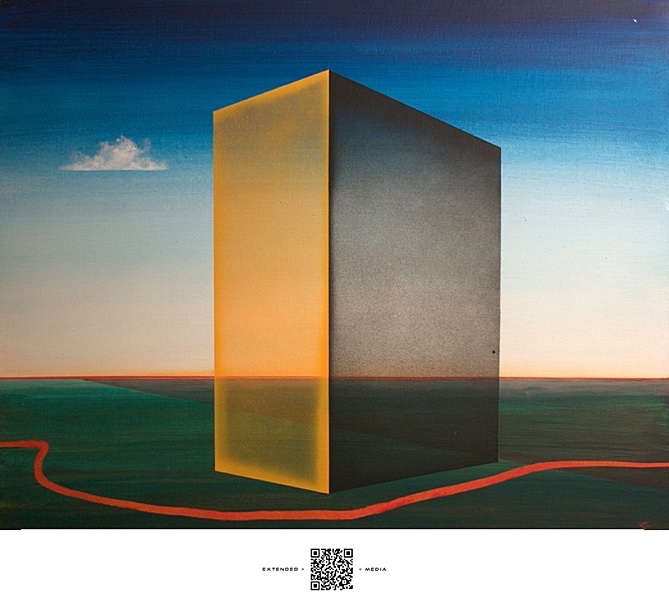
The general characteristic of both Massurrealism (See Prof Nadia Wahdan) and Seehafer’s work over the years ‘is the use of modern technology to fuse surrealism traditional access to the unconscious with pop art’s ironic contradictions’ (Seehafer 2019) and moving forward Seehafer’s work was to include a variety of digital formats and techniques to heighten the affect on the viewer and also as a method of exploration. This incorporation of technology as method of both viewing and production naturally plays with the roles of producer and audience as both content and consumption changed from the last century to this one. Similarly, Seehafer’s work reflected those changes both symbolically (CDs, Virtual Environments) and through application (Video, Online, Multi-platform works).
“I don’t think I should be credited with a starting a new art movement, but rather simply coining a word to categorize the type of modern day surrealist art that had been lacking in definition… there are some who feel that defining something essentially limits, the human condition has always had the need to categorise and classify everything in life”
It is not everyday that Trebuchet gets to speak to the founder of a movement and speaking to Seehafer we reflected how art movements exist and what his impressions are on Massurrealism when seen from the inside.
There is this emerging question about what the future is now.
Like the crude imaging and animations of the video games of the 1980s and all that. I think the vaporwave is about that. I got an email from somebody saying, ‘Oh, from a vaporwave guy, I really thank you for massurrealism.’ Why? Because supposedly massurrealism predated vaporwave and was a precursor. I don’t know if that’s true; I don’t want to say that’s the case. I don’t want to come across like some arrogant jerk. But I can see that, I can see how there is a longing for that, and quite frankly, for me, because I’m in my fifties, I get a kick out of that because it’s nostalgic for me.
Massurrealism came from you and two other guys, I believe.
We did our first book which was published in 2004 which was called Massurrealism: A Dossier, which consisted of five of us. Some folks have come and gone in the group. They like it, but they go out and do other things. The current one is essentially a re-release from the dossier. Cecil Touchon’s another colleague of mine; he’s done massurrealist poetry. Right now, the main book is circulated as three essays.
Talk to me a bit about the timeline from 1992 when you first launched massurrealism. We’re talking a good 30 years, right? What are the highlights of the decades?
1992! What’s that poem? ‘And the decades shall run like rabbits’, or whatever the hell. Yeah,1992. Late 1980s I was really into this idea of how popular culture has influenced my work. I remember even going back to high school, working in a grocery store, and you see popular culture, advertisements and everything throughout the entire place. I know it sounds weird like that, but that just seems like that’s my process.
I did this shopping cart series which I got a kick out of, to try to bring it to some sort of existentialist level. People kept asking me, ‘What’s the kind of work that you do?’ So that’s what made me coin the phrase. I don’t consider myself some sort of high academic guy who should be theorising all kinds of stuff, but this is why I came up with a word, because it wasn’t really pop art I was doing, and it wasn’t really just classic surrealism, it was a combination of the two. I figured I would do that and put that word out there because at least it would be easier for me to say it’s massurrealism and establish that. And since then, other artists have identified with it too. Michael Morris was another artist that really got into that as well and when I put this on the web, I kept getting emails from folks saying, ‘I can really identify with this.’
So I set up the .com website initially, which eventually became .org, then we were showcasing other artists’ works. I can’t say that we’re taking the world by storm—I mean, some day. But it seems like it’s becoming more relevant now, the whole massurrealism thing, more so than even back in the early 1990s. You see this so much, like on Instagram, you see hobbyists with their cameras and their Photoshop work, and they do some really cool stuff. Of course there’s that one student, I think Brianna [Aaronson], and she collected stuff on the Internet, stuff that she pulled from advertising demos from the kiosk or at the bus stops in the UK, and then she did some stuff about us. And it seems like that’s what it is. I think so long as people continue to dream, the whole surrealist aspect is never going to go the way of the dodo.
The one thing that we all stress is that massurrealism is a form of art that is all about human creativity. In my little excerpt of my essay that was on video, I also pulled two quotes from Marshall McLuhan, which I really liked. It was one about art as an environment, but then there’s one he said, instead of worrying about what media is doing to us, one should charge straight ahead and kick them in the electrodes.

In other words, a lot of people get a little bit overwhelmed by the whole media thing, but the fact is, we’re still in charge of it all. And I think that’s kind of another side purpose of massurrealism. We’re not trying to scare people with this art movement that’s all about mass media; really at the end of the day, the reins are in the hands of humans. And if you’re aware of what’s going on, that this is not the real world, it’s massurrealism, you can take more control of it.
Is it a resistance movement in a sense?
It can be. I think it’s important that it’s an awareness, that we don’t buy into everything at face value. Look at the concept of the deep fake technology. Scary stuff. I’ve seen videos of one guy that had Obama’s face speaking, and there was a guy speaking for him. It looked like Obama initially, he’s calling Donald Trump a dipshit. It’s kind of funny. But then it’s not really him. Another thing that massurrealism as an art concept can offer is that look, just be aware that the world out there is very massurreal. So therefore, always be willing to not take everything for face value, and always think.
Can you unpick the difference between pop art and Massurrealism?
I agree with Marshall McLuhan that pop art was sort of the first form of technology-influenced art. But pop art, in a sense, its imagery is pretty straightforward. For example, the Warhol prints, there’s just a very interesting way of doing a portrait of somebody in the pop art sense, whereas massurrealism is technology-influenced art, mass media, and of course, pop art is part of that, but in a surrealist sort of landscape or surrealist environments, it’s two elements. And that’s the difference between straightforward pop art and massurrealism. So whereas massurrealism has got certain pop art qualities, it’s really about that plus the surrealist and the dreamlike and the freedom of thoughts, the aspect.
Some people say the key element in surrealism is taking everyday images or situations and twisting them slightly, to create a sense of the uncanny and make us reevaluate them. What do you think about that? Is that part of your approach?
It also depends on a person’s view of surrealism. Some schools are just a little bit altered; it initially looks normal, then you look at it again, it’s not so normal. And then there’s obvious liberties being taken; you look at some of the Salvador Dalí works of those days. That variety, surrealism, there’s this spectrum. For example, I’m a fan of René Magritte, and his stuff is more whimsical, it’s very enjoyable. I also like de Chirico, when he was doing his surrealist works, very interesting, the long drop shadows, the setting sun partially at the horizon. There’s a lot of freedom for any kind of toning on a set visually for that surrealist element. And yeah, it’s all pretty cool. Like I said, it’s pretty flexible.
With your own works, is there a message or are they more tonally set, emotional, so that you look at them?
The tonal thing, that was the image that for a lot of folks is sort of a main one. The idea of there’s something beyond just what you see there; for some people it’s spooky, for me it’s more like I want to show you something just beyond a shopping cart in a parking lot. Some people seem to see it as a very de Chirico influence, which I guess I would say it is, but for that particular image it’s just something beyond what you see there. Almost spiritual, in a good sense.
It must be a strange experience to be an artist doing your own work, and then all of a sudden, you’re the figurehead of a movement. How does that work?
It’s nice. What I’d like to really think of it is being a little bit more organic. All of us involved are pretty genuine folks. And you know how they say, if you’re somebody really famous, you have to put on some sort of an act, and we’re not putting on an act. This is something that we really identify with and believe in. It’s certainly flattering, and I really appreciate that. We’ll see where it goes. It’s just been my raison d’être. The kind of thing that keeps you off the streets and out of trouble.
It’s interesting you bring up pop art as a technology art. There was Rauschenberg’s dots and that sort of stuff. It really shows the medium coming through that, and McLuhan’s a medium-as-message kind of guy. That’s very important. With massurrealism, it’s more about the symbol than it is about the technology of conveyance. Certainly in the examples I’ve seen in your work, I’d argue that.
It’s the human experience of it, although obviously the vehicle is what massurrealism is. I think it’s really what the viewer gets out of it in the final analysis. But these components of surrealism and mass media are the sort of things that have influenced me. It’s certainly an American thing growing up in the States and having advertising all over you.
Any artwork is a reflection of the person that did it. And say, you’re a person, therefore, you have an obligation to make a change for the better, which I think could be argued one way or the other. Art just is, a person just is, an artwork just is, and sometimes you just want to do art for art’s sake. I don’t think there’s any obligation the artist has to do something with a profound message. If he or she can it’s not a problem; artists are just artists, they should be able to just do it. Because otherwise you feel like you gotta be a little bit anxious, like I gotta make a message here.
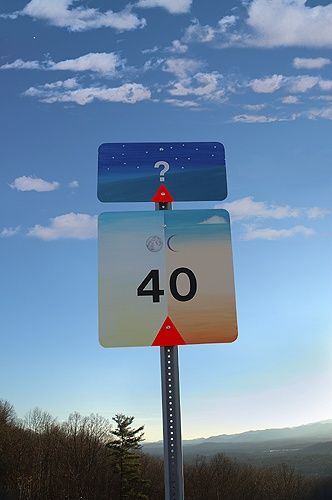
I did a series of sculptures of highway signs where I painted them and a bunch of things. [There is] something about when you’re on the highway, and especially in the States when these highways go on forever across God knows what, and you just see these signs. It’s part of my own personal experience and path. But I think that each person is going to have their own symbol that matters to them the most, and that’s normal. I don’t feel one particular thing’s gonna be profound for everybody.
What would happen if you felt constrained by the title massurrealism?
Trust me, I’ve already crossed that path! That’s something I’m dealing with. I’ve got a whole bunch of sketches I’ve done, some nudes, I was doing some life-drawing. Nothing massurreal about that whatsoever. There is something about that where I’m like, ‘This is for me, because I founded it.’ Not everybody who’s part of the group is going to do something that’s strictly massurreal. But unfortunately, because I’ve obviously been given this credit now starting this thing, there is that pigeonholing. I don’t know what to do; maybe some day I’ll have an exhibit of non-massurreal works of some sketches of nudes I’ve done over the years and things like that, that would be a fun thing. I’m still working with that right now and stay tuned.
Further information.
http://www.massurrealism.org/seehafer/

The aim of art is to represent not the outward appearance of things, but their inward significance. – Aristotle

